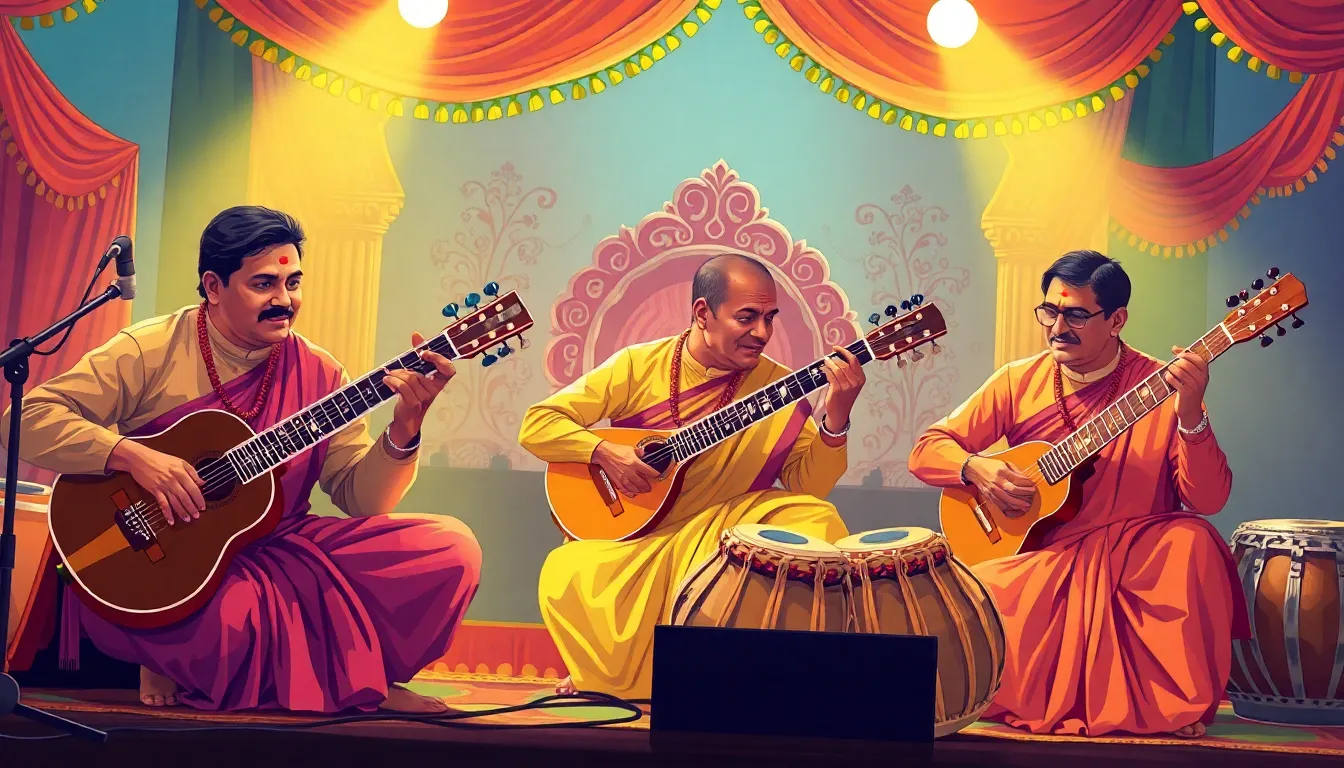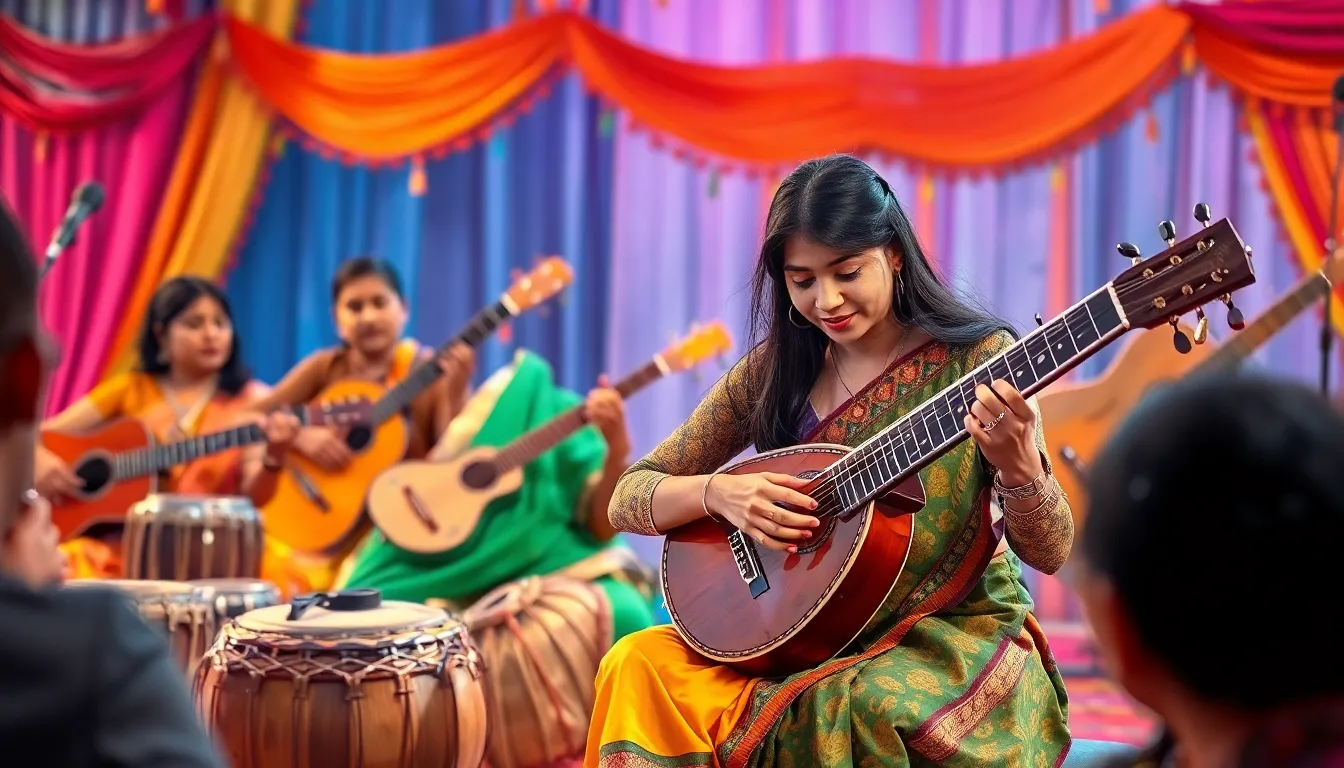In the vibrant tapestry of Indian classical music, nishidhasagamam stands out like a quirky cousin at a family reunion—unconventional yet fascinating. This unique concept, rooted in the intricate world of ragas, challenges musicians and listeners alike to embrace the unexpected. Who knew that a little dissonance could lead to such delightful harmony?
nishidhasagamam
Nishidhasagamam represents a distinctive feature of Indian classical music, emphasizing unconventional approaches within ragas. This musical technique focuses on dissonance, encouraging artists to explore unexpected combinations. Musicians utilize this methodology to create captivating performances that challenge traditional norms.
Listeners often find themselves intrigued by the beauty of dissonance, which can evoke a range of emotions. The surprise elements foster a deeper appreciation for the complexities of sound. Engaging with nishidhasagamam invites both performers and audiences to explore the nuances of musical expression.
Incorporating nishidhasagamam requires skill and creativity from musicians. Such exploration results in innovative interpretations, pushing the boundaries of what is typically expected in performance. This approach not only enriches individual pieces but also creates a dynamic musical experience.
Diverse examples of nishidhasagamam highlight its versatility. Some musicians blend it with popular ragas, while others infuse it into contemporary compositions. Each instance reveals the adaptability of this technique within various musical contexts.
Essentially, nishidhasagamam challenges conventional definitions of beauty and harmony. By embracing dissonance, it encourages a broader understanding of music. This unique element cultivates an appreciation for both harmony and the unexpected, ultimately enhancing the listening experience in Indian classical music.
Historical Background

Nishidhasagamam holds a pivotal place in the narrative of Indian classical music. This concept invites musicians to explore dissonance and unconventional harmonies within ragas.
Origins of Nishidhasagamam
Roots of nishidhasagamam trace back to ancient Indian musical traditions. The technique emerged as musicians sought to break free from conventional tonal systems. As composers experimented, they recognized the expressive potential of dissonance, ultimately leading to its incorporation in performances. This experimentation allowed artists to challenge traditional frameworks and foster creativity.
Evolution Over Time
Over centuries, nishidhasagamam transformed significantly. Musicians began blending it with a variety of ragas, introducing unexpected elements to performances. This adaptation enriched the emotional depth of music, captivating audiences through unique interpretations. Innovations in instrumentation and improvisation further expanded its application, allowing musicians to reflect cultural shifts. As it evolved, nishidhasagamam not only maintained its core essence but also adapted to contemporary musical landscapes.
Key Concepts and Principles
Nishidhasagamam embodies unique elements that enrich the landscape of Indian classical music. It encourages artists to venture beyond traditional norms.
Core Tenets of Nishidhasagamam
Nishidhasagamam prioritizes dissonance and unconventional combinations. It challenges the boundaries of established ragas and fosters creativity within compositions. Musicians employ this technique to explore unexpected tonal relationships. Innovation remains central to its practice, allowing performers to evoke diverse emotions in listeners. Flexibility in interpretation supports the essence of nishidhasagamam, making it a vital aspect of modern classical music.
Significance in Practice
Nishidhasagamam enhances the emotional depth of performances. Musicians infuse elements of surprise and complexity into their renditions. This technique connects audiences to the raw nuances of sound, encouraging deeper engagement with the music. Experimentation with instrumentation amplifies overall impact, reflecting evolving cultural influences. Incorporating nishidhasagamam cultivates appreciation for the interplay of harmony and tension in music, enriching the listening experience.
Contemporary Relevance
Nishidhasagamam remains a vital aspect of Indian classical music, influencing current artistic practices and cultural expressions.
Nishidhasagamam in Modern Society
Musicians today incorporate nishidhasagamam into their compositions, highlighting its significance in contemporary performances. Audiences now appreciate this technique as a means to explore emotional depth and complexity. Artists blend traditional elements with innovative sounds, resulting in immersive experiences that resonate with listeners. Festivals and concerts often feature nishidhasagamam, promoting its relevance within current musical discourse. Collaborations between classical and modern genres further showcase its versatility, breaking boundaries and attracting diverse audiences.
Influence on Other Philosophical Systems
Nishidhasagamam’s emphasis on dissonance attracts attention from various philosophical frameworks. This technique aligns with concepts found in Western avant-garde movements, encouraging exploration of unconventional sound structures. Philosophers and theorists recognize the significance of dissonance in articulating emotional truths. Scholars often draw parallels between nishidhasagamam and contemporary artistic expressions globally, highlighting its universal appeal. The intermingling of Eastern and Western philosophies opens new avenues for creativity, enriching artistic dialogues and encouraging cross-cultural exchanges.
Conclusion
Nishidhasagamam stands as a testament to the evolving landscape of Indian classical music. Its focus on dissonance and unconventional combinations not only challenges established norms but also enriches the emotional experience of performances. As musicians continue to explore this innovative technique, they create captivating soundscapes that resonate deeply with audiences.
The interplay of tradition and modernity within nishidhasagamam fosters a dynamic artistic dialogue. This approach not only honors its historical roots but also embraces contemporary influences. Ultimately, nishidhasagamam encourages a deeper appreciation for the complexities of sound, inviting both musicians and listeners to engage with music in transformative ways.

